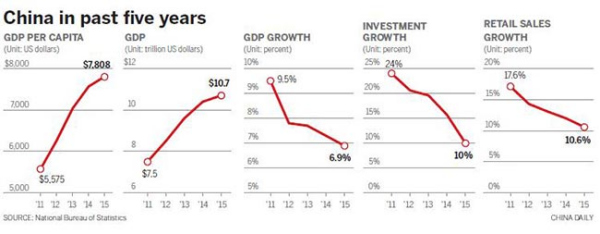
Capital market build-up requires myriad players
Editor's Note: China is pushing supply-side reform to boost growth to cope with the economic downturn and further release the country's growth potential. In this Policy Review page, Paul Sheard, chief global economist of rating agency Standard & Poor's, talked to China Daily about how China can build up its financial institutions to help revitalize the economy and handle the challenges facing the world's second-largest economy.
The argument that demand-side management, like monetary easing and fiscal stimulus, cannot pull economies out of their woes has been commonly heard in the United States and Europe, and also here in China, where it has given rise to the government's push for supply-side reform.
But what exactly are supply-side reforms? While the central government has listed tasks such as destocking and reducing overcapacity, these seem more like prescriptions to deal with the acute symptoms of the economy, rather than a long-term strategy for its sustainable health.
The policy taxonomy offered by Paul Sheard, chief global economist of Standard & Poor's, could help understand what the Chinese economy needs. According to Sheard, demand management, supply side, regulatory, crisis management and institution building are the five types of policies that governments around the world use to promote economic growth.
They may look abstract at the first glance, but when applied to specific economies, they explain a lot. For example, Sheard has argued that in the US, as demand management policies have helped the economy recover, a more pressing issue now is to deploy supply-side policies to increase potential growth and improve the resiliency of the economy.
When it comes to China, Sheard argues that all five types of policy are important, but building the right "institutions" is the core challenge, and the one that policymakers should focus on.
Financial and monetary system architectures; public administration, including the ownership of productive assets, and the fiscal and welfare systems; the legal system and a property rights system; limited liability corporation and accounting standards; and the rules governing corporate governance and a corporate control market, are, among other things, the "institutions" that are needed.
These are important for China, because, unlike the US and Europe, China is still at a relatively early stage of its economic development and remains a transitional economy, with its economic, social, political fabrics still evolving. For example, despite its rapid growth, Sheard said, the country has yet to develop a "sophisticated" financial system to effectively convert Chinese household savings, which are among the highest in the world, into diversified financial portfolios and offshore investment. A "multi-layer" capital market requires myriad players in the marketplace, such as asset managers and mutual funds, which are active in the primary and secondary markets.
What's the difference between institution building and supply-side reform? Sheard said supply-side reform is about making the existing institutions more flexible to generate more output with a given capacity. Institution building, on the other hand, is about creating new organizations and markets; refining, strengthening and enforcing the economic rules rather than establishing them.
For example, he said that in the US the merger and acquisition market is very active, with different groups such as asset managers, private equities and hedge funds bidding for control of corporate assets. In China, the "market for corporate control" is still nascent.
"The ownership and management of productive assets is a key influence on how an economy performs. China still has large State ownership. How fast and how far China goes in reforming the State-owned enterprises, not necessarily privatizing them, but changing the governance system and making the sector more subject to market forces, really matters," Sheard said.
Commenting on the possible bankruptcies of China's loss-making SOEs and local governments' tendency to offer them life support, Sheard said worries over short-term pains is not a legitimate argument.
"From a more dynamic perspective, it doesn't make sense to have inefficient enterprises leading to latent losses and efficiency in the system. The cost of not reforming SOEs outweighs those accounting losses (of bankruptcies)," he said.



















































